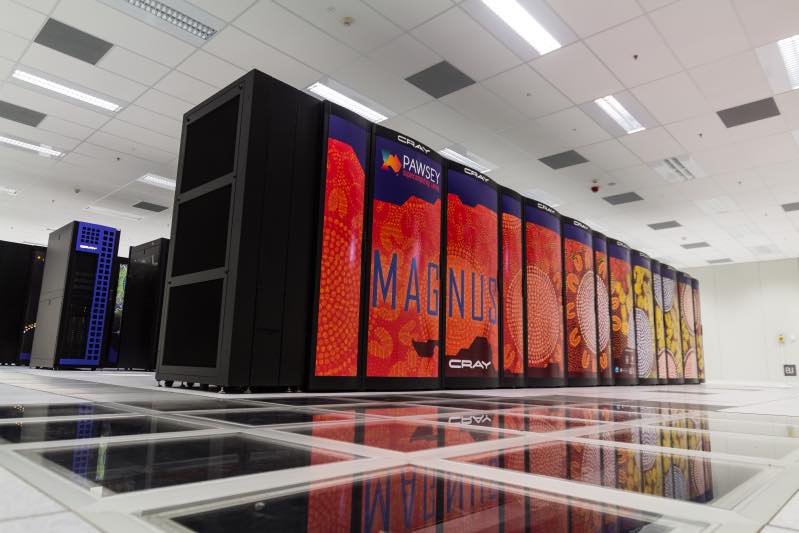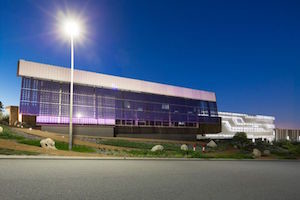 The Pawsey Supercomputer Centre in Australia is one of the world’s leading institutions in High Performance Computing. As an unincorporated joint venture between CSIRO, Curtin University, Edith Cowan University, Murdoch University and The University of Western Australia, Pawsey will be making the long journey to ISC 2016 again this year to share their supercomputing know-how with the international HPC community. To learn more, we caught up with the Centre’s David Schibeci and Karina Nunez.
The Pawsey Supercomputer Centre in Australia is one of the world’s leading institutions in High Performance Computing. As an unincorporated joint venture between CSIRO, Curtin University, Edith Cowan University, Murdoch University and The University of Western Australia, Pawsey will be making the long journey to ISC 2016 again this year to share their supercomputing know-how with the international HPC community. To learn more, we caught up with the Centre’s David Schibeci and Karina Nunez.
insideHPC: As the largest supercomputer in the Southern Hemisphere, what is the Magnus supercomputer doing for your researchers? ——
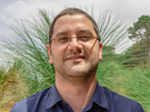
David Schibeci, Head of Supercomputing, Pawsey Centre
David Schibeci: As the most powerful public research supercomputer in the southern hemisphere, Magnus supports several hundred research projects led by researchers from Australian academic and research institutions. As a Cray XC40 system, Magnus provides a petascale supercomputing environment for a diverse range of application areas, such as energy and resources, food security, ground water modeling, climate modeling, astronomy and astrophysics, genomics, and advanced manufacturing.
Magnus is a petascale machine and provides compute resources on a scale which has only been recently available in Australia. This allows researchers to scale their scientific research beyond what they had been previously capable of. The Supercomputing Team at Pawsey, made up of both national and international Supercomputing Specialists, are embracing the challenge of getting Australia researchers to be able to leverage the possibilities Magnus can unlock.
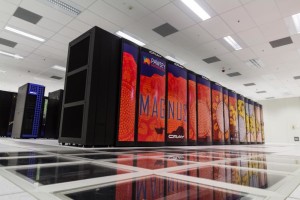 We have also posted a number of case studies that show how Magnus is being used to advance science.
We have also posted a number of case studies that show how Magnus is being used to advance science.
insideHPC: Magnus is painted with a stunning mural that looks to be an artistic take on Science. What is the story behind this graphic design?
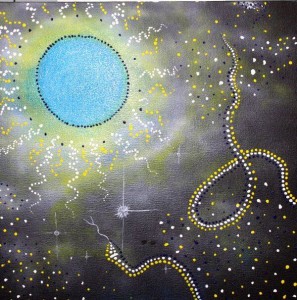
Artist Jesse Pickett’s painting on the Magnus supercomputer. ““The Rainbow Serpent and the Moon are connected together due to the Wagu (Rainbow Serpent) creating water and the moon moving it to create life.”
Karina Nunez: Pawsey selected these images to reflect our close connection with the north-west of Western Australia. The two areas of science that Pawsey supports most closely are the energy and resources and radio astronomy, and we wanted to choose art that thematically reflects both the ground below and the sky above. In addition, Pawsey has a close relationship with the Murchison Radio Astronomy Observatory through our handling of its radio astronomy data, and we wanted to work with indigenous artists who had a personal relationship with that region.
insideHPC: The Pawsey Centre is playing a key role in the SKA telescope project. What kinds of activities are going on today and what are the next steps for the project?
David Schibeci: The Pawsey Supercomputing Centre both supports and is involved in a range of Square Kilometre Array (SKA) related activities. It supports two of the SKA precursor projects, the Australian Square Kilometre Array Pathfinder (ASKAP) and the Murchison Widefield Array (MWA). Pawsey has a Cray XC30 supercomputer called Galaxy that is dedicated to performing the science data processing for both of these projects, and the resulting data products are stored on Pawsey’s hierarchical storage management (HSM) service and made available to researchers. Both the Pawsey Supercomputing Centre’s infrastructure and operational support are critical for the success of these SKA precursors.
Pawsey is also involved in the SKA Pre-construction Project, which has been underway since 2013. The Pawsey Supercomputing Centre is a member of the Science Data Processor (SDP) consortium, which is responsible for designing the computing environment used to produce image products from the telescope. This includes a commitment of two full-time equivalent positions over three years to provide valuable input to the design process based on experience gained from supporting the ASKAP and MWA precursor projects.
Over the next couple of years, the SKA will transition from the detailed design to the first phase of construction. The Pawsey Supercomputing Centre is the preferred host by the SKA Organisation of the science data processor and archive for the low frequency component of the SKA. The staff at Pawsey are extremely excited about being involved in the SKA project, especially as it is the first ‘big science’ project that Australia will be a the forefront. It is a very exciting time for the state, Australia and Pawsey to be part of what will be the largest scientific instrument on the planet, which will span continents.
We’ve highlighted some of our work with the SKA project at our web site.
insideHPC: The Pawsey Centre participated in the recent discovery of gravitational waves. What kind of computational work was done at your Centre and how were GPUs used?
David Schibeci: The Pawsey Supercomputing Centre has supported gravity wave research led by Professor David Blair and Professor Linqing Wen from the University of Western Australia since 2012. The group was an early adopter of the centre’s first GPU-accelerated system called Fornax, which it used to develop real-time signal processing techniques for the detection of gravitational waves.
The Pawsey Centre will host an exhibit at ISC 2016. The event takes place June 19-23 in Frankfurt.
Sign up for our insideHPC Newsletter

